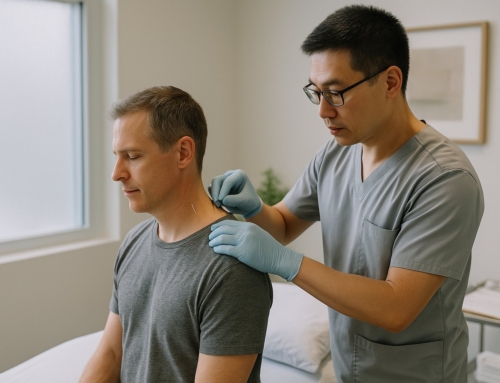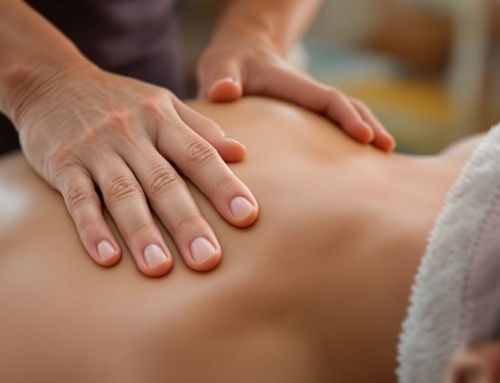How to Prevent Back Pain While Gardening
Gardening is a rewarding hobby that shouldn’t be hindered by discomfort. Understanding the causes of gardening-related back pain and taking proactive steps can reduce your risk of experiencing back pain, allowing you to fully enjoy your time tending to your garden. Whether you’re gardening in the Clayton Heights area of Surrey by us or anywhere else along the West Coast, we aim to guide you through understanding, preventing, and managing back pain associated with looking after your garden.
To minimize strain on your back, try kneeling on one knee instead of both and keeping any objects you lift close to your body. These simple adjustments can significantly impact how you feel after a gardening session. By implementing these strategies, you’ll be better equipped to tackle your gardening tasks without the worry of back pain.
Common Causes of Back Pain When Gardening
Back pain while gardening often stems from poor posture, improper lifting techniques, and suboptimal movement patterns. Many gardeners overlook their physical limitations or become less active during the off-season, making them more susceptible to injury when they return to gardening. Everyday activities that can lead to back pain include bending and twisting, lifting heavy objects incorrectly, overreaching, and spending prolonged periods in uncomfortable positions.
To prevent these issues, it’s crucial to prepare your body for the physical demands of gardening and adopt safe techniques while working in your outdoor space.
Tips for Conditioning Your Body for Gardening from a Chiropractor
As a team of experienced chiropractors at Clayton Heights Chiropractic, we understand that the gardening season along Canada’s West Coast can extend from early spring through late fall. This prolonged season means it’s essential to prepare your body for the physical demands of tending to your garden in our unique coastal climate. To enjoy a healthy and pain-free gardening experience, we recommend a holistic approach focusing on three key areas:
- Improving overall body strength and flexibility
- Adopting efficient movement strategies to minimize strain
- Maintaining proper spinal alignment through regular chiropractic care
By addressing these areas, we can help reduce your risk of injury, enhance your body’s resilience, and enable you to fully enjoy your time in the garden. Whether you’re pruning fruit trees in the Fraser Valley or tending to a vegetable patch on Vancouver Island, our goal is to keep your spine healthy and your body capable throughout the extended gardening season on the West Coast of Canada.
Strengthen Core and Glutes
Strengthening your core and glutes is critical to reducing the risk of back pain while gardening. A strong core and glutes provide better support for your spine, improving posture and reducing the risk of injury. Squats and lunges are effective for building gluteal strength, while planks and bridges engage your core muscles. Leg raises target your lower abs, and pelvic tilts can strengthen deep abdominal muscles. The bird dog exercise improves spinal stability. These exercises target your core and gluteal muscles, enhance your overall spinal stability, and reduce strain on your lower back.

Preparing Your Body for Gardening
Strengthening exercises and improved athleticism lay the groundwork for efficient movement strategies that make gardening easier. With a strong core and glutes, it’s time to utilize these muscles with targeted movements that reduce strain on your lower back. To avoid back pain while gardening, focus on techniques like hip hinges and squats, which allow you to lift and bend without overexerting your lower back. Taking regular breaks every 20-30 minutes is also crucial, enabling you to stretch and recover, focusing on exercises that target hamstrings and hip flexors. Regular breaks and effective movement strategies reduce the risk of back pain, even during extended gardening sessions. Additionally, applying heat to your back afterwards can help relax tense musculature.
| Tool | Benefits | Prevents |
|---|---|---|
| Wheelbarrows & Carts | Carry heavy objects with ease | Strain on back |
| Ergonomic Tools | Comfortable grip for those with arthritis | Strain on hands |
| Garden Stools & Benches | Reduces need for squatting | Pressure on knees & back |
| Raised Beds | Brings plants to a more comfortable height | Excessive bending |
| Vertical Gardens | Reduces need for bending and reaching | Strain on back and knees |
Incorporating these tools and design elements into your landscape creates a more enjoyable and pain-free gardening experience. Wheelbarrows and carts help carry heavy objects without straining your back, while ergonomic tools provide a comfortable grip for those with arthritis. Garden stools and benches reduce the need for excessive squatting, preventing pressure on your knees and back. Raised beds and vertical gardens bring plants to a more comfortable working height, minimizing the need for bending and reaching. By utilizing these solutions, you can maintain your passion for gardening while prioritizing your physical well-being.
Safe Movement Strategies for Gardeners
Maintaining a healthy back while gardening requires attention to body positioning and movement techniques. In addition to strength training, adopting efficient movement strategies is crucial.
Try kneeling on one knee with the other foot upright to stabilize your lower back when working at ground level. When working in your garden, consider your body positioning and movement techniques. Here are some strategies to help protect your back:
- Use a pad or stool to support and reduce stress on your lower back.
- Keep objects close to your body to avoid overreaching.
- Instead of twisting, pivot to avoid stressing your spine and muscles.
- When twisting is unavoidable, engage your core by pulling your belly button towards your spine.
- A few minutes of stretching and loosening your back before gardening can go a long way in preventing injuries.
- Use your leg muscles rather than relying on your back when lifting.
By being mindful of how you move and making simple adjustments, you can prevent back pain and enjoy the many benefits of gardening.
Essential Gardening Tools and Equipment
Investing in the right tools can make a big difference in reducing physical strain while gardening.
Managing Back Pain After Gardening
Despite our best efforts, sometimes back pain can occur after a gardening session, especially given the varied terrain and damp conditions often encountered on Canada’s West Coast. At Clayton Heights Chiropractic, we understand these unique challenges. If you experience a back pain flare-up or spinal discomfort after gardening, we recommend applying ice to the affected area and performing gentle stretches to alleviate muscle tension. Rest for a few days, avoiding activities that strain your spine. When resuming gardening, do so gradually to prevent muscle stiffness and potential misalignments. If back pain persists or worsens, we encourage you to visit our clinic in Surrey for a thorough spinal assessment. Our experienced chiropractors can provide targeted adjustments, recommend personalized stretches to prevent future back pain, and offer advice on maintaining proper spine health while enjoying your West Coast garden throughout the extended growing season.

Frequently Asked Questions
How to Garden and Not Hurt Your Back?
To enjoy gardening without straining your back, adopt simple techniques like bending at the hips and squatting instead of bending your back. Take regular breaks to stretch, helping prevent muscle strain. This way, you can tend to your garden without discomfort.
Why Does Gardening Hurt My Back so Much?
Gardening can be tough on your back due to bending, lifting, and twisting. This is especially true if you’re not used to physical activity or don’t take breaks to rest your muscles. Poor lifting techniques or overreaching can also put extra stress on your lower back.
How to Protect Back Gardening?
Protecting your back while gardening requires physical conditioning, smart movement strategies, and pacing yourself. Incorporate exercises that strengthen your core and glutes, adopt better movement habits, and take regular breaks to rest and stretch. Gradually increase the duration and intensity of your gardening activities to help your body adapt and reduce the risk of sudden strain or injury.
What Is the Best Way to Pull Weeds Without Hurting Your Back?
To avoid straining your back while weeding, bend at the knees instead of the waist and use long-handled tools to minimize the effort required. This technique allows you to tackle weeds without putting unnecessary strain on your back.






